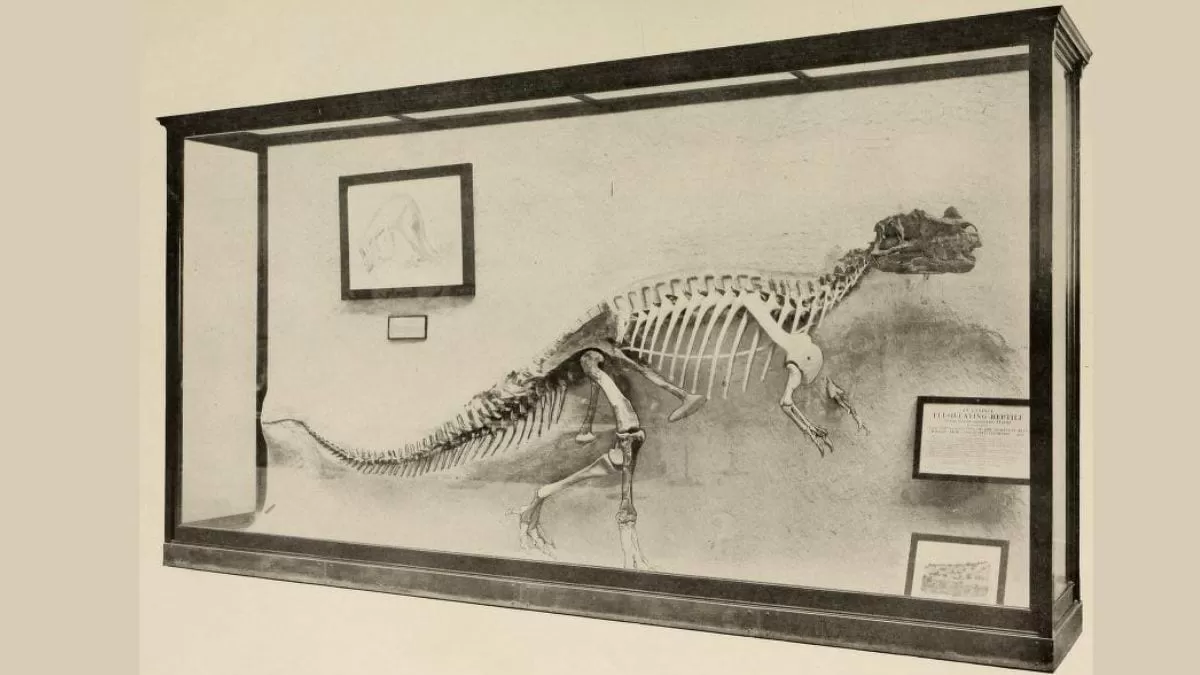Two fossils of an ancient arthropod, named Keurbos susanae, have been discovered in South Africa. This groundbreaking discovery has shed new light on the evolution of life on Earth. The creature, which lived 444 million years ago during the Late Ordovician period, has provided researchers with valuable information about the past.
The fossils were found in the Western Cape province of South Africa, in a site known as Keurbos. This site has long been known for its rich fossil deposits, but these two specimens have captured the attention of the scientific community due to their exceptional preservation. The soft tissues of the arthropod, including its muscles and guts, were found intact, providing a rare glimpse into the anatomy of this ancient creature. However, its shell, legs and head were missing, leading researchers to believe that they were likely scavenged by other animals after the creature’s death.
According to Dr. James Smith, a paleontologist involved in the study, the discovery of Keurbos susanae is significant because it is one of the oldest known arthropods with preserved soft tissues. Arthropods, which include insects, spiders, and crustaceans, are one of the most diverse and successful groups of animals on Earth, with over a million known species. However, their early evolution and development have remained a mystery due to the rarity of well-preserved fossils.
The two fossils of Keurbos susanae are about 5 centimeters in length, making them relatively small compared to other arthropods. They were likely bottom-dwellers, living in shallow marine environments and feeding on organic matter on the seafloor. The presence of preserved soft tissues suggests that the creature lived in low-oxygen conditions, as oxygen is necessary for the decomposition of organic matter. This finding challenges the traditional belief that the early oceans were rich in oxygen, and provides new insights into the environmental conditions that shaped the evolution of life on Earth.
The discovery of Keurbos susanae has opened up new avenues for research and has sparked excitement among paleontologists. The fossils will be further analyzed using advanced imaging techniques, such as CT scans, to reveal more details about the creature’s anatomy and its relationship to other arthropods. This will help scientists better understand the evolutionary history of this diverse group of animals and their adaptations to different environments.
Apart from its scientific significance, the discovery of Keurbos susanae also has cultural and historical importance. The name “Keurbos” comes from the Afrikaans word for “choir,” as the site where the fossils were found is known for its beautiful singing birds. The species name, “susanae,” is a tribute to the wife of the landowner who allowed the researchers to excavate the site. This highlights the collaboration between scientists and the local community, which is crucial for the preservation and study of important fossil sites.
The fossil site at Keurbos has now become a hub of activity, with researchers from all over the world flocking to the site to study the ancient arthropod. The discovery has also attracted attention from the media, bringing international recognition to this small town in South Africa. The fossils will eventually be displayed in a museum, allowing the public to marvel at these ancient creatures and learn about their role in shaping the world we live in today.
In conclusion, the discovery of Keurbos susanae has provided a window into the past, giving us a glimpse of an ancient world that existed millions of years ago. The well-preserved soft tissues of this arthropod have revealed valuable information about its anatomy and the environmental conditions in which it lived. This discovery not only adds to our understanding of the evolution of life on Earth but also highlights the importance of preserving and studying our planet’s rich fossil record.

